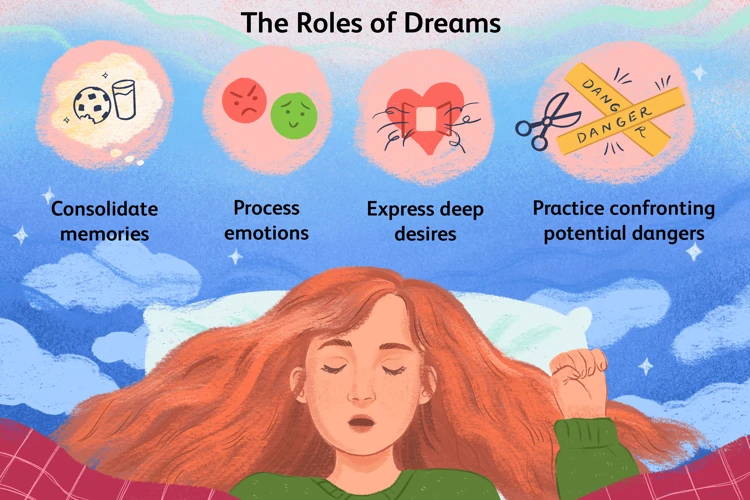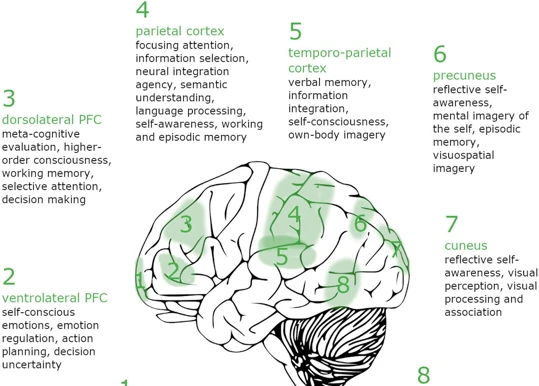Dreams have always fascinated and intrigued humans throughout history. We have sought to uncover the hidden meanings and messages behind these mysterious visions that visit us in the realm of sleep. Lucid dreaming, a phenomenon where one becomes aware that they are dreaming while still in the dream state, offers a unique opportunity to delve deeper into the secrets of our dreams. By harnessing the power of lucid dreaming, we can unlock the potential to decode the intricate patterns that lie within our subconscious minds. In this article, we will explore the role of lucid dreaming in deciphering dream patterns, examine different types of dreams, and discuss techniques to enhance our understanding of these patterns. through the power of lucidity. Join us on this fascinating journey as we unravel the enigmatic realm of dreams.
The Basics of Lucid Dreaming

Lucid dreaming is a state in which one becomes aware that they are dreaming while still in the midst of the dream. This heightened state of consciousness allows dreamers to actively engage and manipulate the dream environment. While some people experience spontaneous lucid dreams, there are techniques that can be practiced to increase the likelihood of achieving lucidity. Reality testing is one such technique, which involves regularly questioning one’s reality throughout the day and performing simple tests to check if one is dreaming. Another technique is keeping a dream journal, where dreamers record their dreams immediately upon waking up. This practice helps to improve dream recall and creates a habit of paying attention to dream content. The Mnemonic Induction of Lucid Dreams (MILD) technique involves setting intentions and repeating a phrase such as “I will become lucid in my dreams” before falling asleep. These techniques, when combined with a strong desire for lucidity, can enhance the ability to have lucid dreams.
The Significance of Dream Patterns

Dream patterns hold a significant meaning and provide valuable insights into our subconscious mind. They are recurring themes, symbols, or experiences that appear in our dreams repeatedly or across different dreams. These patterns can be related to various aspects of our lives, including emotions, fears, desires, and unresolved issues. By understanding and decoding dream patterns, we can gain a deeper understanding of ourselves and our inner world. Dream patterns can offer clues about our psychological state, help us identify unresolved emotions or conflicts, and provide guidance for personal growth and self-discovery. For example, recurring nightmares may indicate underlying fears or traumas that need to be addressed and healed (source). Dream patterns can also offer insights into our emotional well-being and overall mental health (source). Keeping a dream journal can be particularly helpful in recognizing and analyzing these patterns (source). By paying attention to the themes, symbols, and emotions present in our dreams, we can unlock the significance of dream patterns and utilize this knowledge for personal growth and self-reflection.
How Lucid Dreaming Helps Decode Dream Patterns

Lucid dreaming serves as a powerful tool for decoding dream patterns due to its unique ability to provide direct access to the dream state. This heightened state of awareness allows individuals to actively engage with and explore their dreams, gaining valuable insights into the underlying patterns and symbols. By becoming lucid in a dream, one can consciously interact with dream elements, ask questions, and seek understanding. This allows for a deeper exploration of the subconscious mind and the meanings behind specific dream patterns.
One way lucid dreaming aids in decoding dream patterns is by providing an opportunity to observe recurring themes or symbols that may arise across multiple dreams. These recurring patterns can serve as clues to understanding deeper aspects of one’s psyche and can provide valuable insights into personal growth and emotional well-being.
Lucid dreaming offers the possibility of altering the course of a dream, allowing dreamers to test different scenarios and observe the resulting changes. By consciously experimenting with dream elements, individuals can gain a better understanding of the subjective nature of dreams and the meanings behind certain patterns.
Additionally, lucid dreaming provides a safe space to explore and confront fears and anxieties that may manifest in our dreams. By consciously facing and working through these fears, one can gain a sense of empowerment and personal growth.
Lucid dreaming assists in the decoding of dream patterns by providing direct access to the dream state, allowing for observation of recurring themes, altering dream scenarios for experimentation, and confronting fears and anxieties. Through this unique approach, individuals can gain profound insights into their dreams and unlock the hidden meanings within.
Exploring Different Dream Patterns

Dreams come in a variety of patterns, each with its own unique symbolism and message. As we explore different dream patterns, we gain insight into the workings of our subconscious mind. One common dream pattern is flying dreams, where individuals experience the exhilaration of soaring through the sky, symbolizing freedom or a desire for escape. Falling dreams, on the other hand, often reflect feelings of insecurity or a loss of control. Being chased dreams can indicate unresolved fears or anxieties, while dreams of teeth falling out are commonly associated with feelings of powerlessness or a fear of aging. These dream patterns provide valuable clues about our emotions, fears, and desires, offering us a window into our inner worlds. By paying attention to these patterns and analyzing their meanings, we can better understand ourselves and work towards personal growth and healing.
1. Flying Dreams
Flying dreams are one of the most common and exhilarating dream experiences. In these dreams, individuals find themselves soaring through the sky, defying gravity and experiencing a sense of freedom and empowerment. Flying dreams often symbolize a desire for freedom, liberation, and a sense of being in control. Those who frequently have flying dreams may possess a strong sense of ambition, as flying represents the ability to rise above obstacles and reach new heights. Additionally, flying dreams can reflect a sense of escape from everyday realities or a desire to explore new possibilities. While each individual’s flying dream may have unique variations and details, the overall theme of liberation and empowerment remains consistent. Exploring the patterns and themes within flying dreams can provide valuable insights into one’s subconscious desires and aspirations.
2. Falling Dreams
Falling dreams are a common type of dream that many people experience at some point in their lives. These dreams often involve a sensation of falling from a great height, and they can be quite vivid and intense. While they can sometimes be unsettling or even terrifying, falling dreams can also provide valuable insights into our emotions and life experiences. One interpretation of falling dreams suggests that they may symbolize a lack of control or a fear of losing control in certain aspects of our lives. The sensation of falling can represent a loss of stability or a feeling of being overwhelmed by circumstances. However, falling dreams can also be interpreted as a metaphor for personal growth and transformation. They may indicate a willingness to take risks or a desire to let go of the old and embrace the new. Whether they evoke fear or excitement, falling dreams can serve as a reminder to examine our fears, confront our anxieties, and embrace change. By practicing lucid dreaming techniques, such as reality testing and keeping a dream journal, we can gain a deeper understanding of the underlying emotions and messages behind our falling dreams. Through the power of lucidity, we can explore the symbolism and significance of these dreams and use them as a tool for personal growth and self-discovery.
3. Being Chased Dreams
Being chased dreams are a common and often unsettling type of dream experienced by many individuals. In these dreams, the dreamer finds themselves pursued by an unknown or threatening figure. The intensity of these dreams can evoke fear, anxiety, and a sense of urgency. However, when it comes to decoding dream patterns, being chased dreams can provide valuable insights into the dreamer’s emotions and subconscious fears.
One possible interpretation of being chased dreams is that they reflect a feeling of being overwhelmed or pursued by problems or challenges in waking life. The relentless pursuit in the dream may symbolize the dreamer’s struggle to escape or confront these issues. This type of dream can serve as a metaphor for unresolved conflicts, stress, or feelings of being trapped in real-life situations.
Another interpretation suggests that being chased dreams may be a manifestation of repressed emotions or fears. The pursuer in the dream could represent an aspect of the dreamer’s own personality or unresolved feelings that they are trying to avoid or escape from. It is essential to pay attention to the emotions experienced during these dreams, as they may provide clues to the underlying emotional states that need to be addressed or acknowledged.
To decode the specific meaning of being chased dreams, it is beneficial to keep a dream journal. Recording the details of the dream, including the scenery, the pursuer’s characteristics, and the dreamer’s emotions, can help identify recurrent patterns and themes. Reflecting upon these patterns and exploring any possible connections to real-life situations or emotions can aid in understanding the deeper meaning behind the dream.
It is important to note that dream interpretation is subjective and personal to each individual. While certain dream symbols or patterns may have general meanings, the interpretation of being chased dreams should consider the dreamer’s unique experiences and emotions. Using techniques such as journaling and self-reflection, individuals can gain valuable insights into the patterns of their dreams and develop a deeper understanding of themselves.
4. Teeth Falling Out Dreams
Teeth falling out dreams are one of the most common and intriguing dream patterns that many people experience. These dreams often evoke a sense of panic and discomfort as individuals find their teeth crumbling, falling out, or sometimes even growing excessively. While the exact interpretation of these dreams can vary depending on personal experiences and cultural beliefs, they are widely believed to symbolize feelings of insecurity, powerlessness, or a fear of aging and loss. In some cases, teeth falling out dreams can represent a fear of embarrassment or a loss of attractiveness. Alternatively, these dreams can also indicate a desire for personal transformation or a need to communicate more effectively. It is important to note that dream interpretations are subjective and can be influenced by individual experiences and emotions. To better understand the personal meaning behind teeth falling out dreams, it is helpful to keep a dream journal and reflect on the emotions and events that coincide with these dreams.
Lucid Dreaming Techniques to Understand Dream Patterns

To understand the intricate patterns that emerge in our dreams, it is essential to harness the power of lucid dreaming. Several techniques can be used to achieve lucidity and gain deeper insights into dream patterns. One effective technique is reality testing, where individuals regularly question their reality throughout the day and perform simple tests to determine if they are dreaming. By cultivating this habit, it becomes easier to recognize the distinct characteristics of a dream and become lucid within it. Another helpful technique is keeping a dream journal, where dreamers write down their dreams immediately upon waking. This practice not only aids in improving dream recall but also allows for the identification of recurring themes and symbols that appear in dreams. Additionally, the Mnemonic Induction of Lucid Dreams (MILD) technique can be employed. This technique involves setting clear intentions to become lucid in dreams by repeating affirmations before falling asleep. By utilizing these powerful lucid dreaming techniques, individuals can unlock the hidden meanings within their dream patterns and gain a deeper understanding of their subconscious mind.
1. Reality Testing
Reality testing is a fundamental technique used to enhance the possibility of having lucid dreams. It involves making a conscious effort to question the nature of reality throughout the day. By regularly asking oneself, “Am I dreaming?” and engaging in simple reality checks, such as trying to push a finger through the palm of the opposite hand, individuals can reinforce their awareness and critical thinking during waking hours. These checks should be done sincerely, paying close attention to the surroundings and one’s sensory experience. This practice creates a habit of skepticism and mindfulness that will carry over into the dream state. The goal is to develop the habit of questioning reality so deeply that it becomes second nature, increasing the likelihood of performing a reality check within a dream. The more frequently one engages in reality testing while awake, the more likely it is that they will eventually perform the same tests while in a dream and become aware of their dreaming state. Practicing reality testing consistently and with genuine curiosity is an important step towards achieving lucidity in dreams and decoding dream patterns.
2. Keeping a Dream Journal
Keeping a dream journal is a powerful tool for understanding and decoding dream patterns. When we wake up from a dream, our memory of it can quickly fade. By immediately recording our dreams in a journal, we capture the details and emotions while they are still fresh in our minds. This practice not only helps to improve dream recall but also encourages a deeper level of self-reflection. When writing in a dream journal, it is important to describe the dream in as much detail as possible. Include sensory information, emotions, and any significant symbols or themes that stood out. Don’t worry about grammar or making it sound coherent; the focus is on capturing the essence of the dream. By regularly writing in a dream journal, patterns and recurring themes may begin to emerge. This can provide valuable insights into the subconscious mind and uncover hidden meanings. Additionally, reviewing past dreams in the journal can help to identify connections and correlations between different dreams, as well as with waking life events. So, grab a journal and a pen, and embark on the journey of self-discovery through the pages of your dreams.
3. MILD Technique
The Mnemonic Induction of Lucid Dreams (MILD) technique is a popular method used to facilitate lucid dreaming. This technique involves setting intentions and using mnemonics or mental cues to increase the likelihood of becoming aware in the dream state. To practice the MILD technique, one must first establish a regular sleep schedule and make sure to get an adequate amount of sleep each night. Before going to bed, it is important to create a relaxed and comfortable environment conducive to dreaming. Next, as one lies in bed, they should focus their attention on the idea of becoming lucid in their dreams. This can be done by repeating a phrase such as “I will become lucid in my dreams” or visualizing themselves realizing they are dreaming. The intention should be strong and genuine. As one falls asleep, they should continue to hold onto the belief that they will become aware during their dreams. Additionally, it can be helpful to wake up after a few hours of sleep and then go back to sleep while maintaining the intention to have a lucid dream. Through consistent practice and a strong mindset, the MILD technique can greatly increase the chances of experiencing lucid dreams and exploring the fascinating world of dream patterns.
The Benefits of Decoding Dream Patterns
Decoding dream patterns can offer a multitude of benefits to individuals who embark on this journey of self-discovery. Firstly, understanding dream patterns can provide valuable insight into one’s subconscious mind. Dreams often serve as a reflection of one’s thoughts, emotions, and experiences, and by decoding these patterns, individuals can gain a deeper understanding of their inner workings. This self-awareness can lead to personal growth and a greater sense of self. Secondly, decoding dream patterns can assist in identifying and addressing unresolved issues or emotional traumas. Dreams can act as a symbolic representation of these unresolved issues, and by deciphering their meaning, individuals can work towards healing and resolution. Additionally, decoding dream patterns can enhance creativity and problem-solving abilities. Dreams have a tendency to present information in metaphorical and symbolic ways, allowing individuals to approach problems from unique perspectives. This can spark innovative thinking and lead to creative breakthroughs in various aspects of life. Finally, understanding dream patterns can contribute to overall emotional well-being. Dreams often provide a release for repressed emotions and can act as a therapeutic tool for processing difficult experiences. By deciphering dream patterns, individuals can gain insight into their emotional state and take proactive steps towards enhancing their emotional well-being. Ultimately, the benefits of decoding dream patterns are vast and can enrich one’s life in profound ways.
Conclusion
In conclusion, lucid dreaming holds immense potential in decoding dream patterns and unraveling the mysteries of our subconscious mind. By becoming aware within our dreams, we gain a unique vantage point to explore and understand the intricate patterns that emerge during sleep. Through lucid dreaming techniques such as reality testing, keeping a dream journal, and employing the MILD technique, we can enhance our capacity to achieve lucidity and gain valuable insights into our dream patterns. Understanding these patterns can provide us with valuable information about our emotions, fears, desires, and even our overall well-being. Whether it’s flying dreams, falling dreams, being chased dreams, or teeth falling out dreams, each unique dream pattern has its own significance and symbolism that can be explored through the lens of lucidity. So, if you’re curious about decoding your own dream patterns, embrace the realm of lucid dreaming and embark on a fascinating journey of self-discovery.
Frequently Asked Questions
1. What is the significance of lucid dreaming?
Lucid dreaming offers a unique opportunity to explore and navigate the vast landscape of our subconscious mind. It allows individuals to actively participate in their dreams, leading to potential insights, creativity, and personal growth.
2. Can anyone learn to lucid dream?
Yes, with practice and dedication, almost anyone can learn to lucid dream. It may take time and patience, but by incorporating various techniques and maintaining a consistent practice, individuals can increase their chances of experiencing lucid dreams.
3. Are there any risks associated with lucid dreaming?
Lucid dreaming is generally considered safe and is not associated with any significant risks. However, some individuals may experience sleep disturbances or difficulty differentiating between dream and reality upon waking up.
4. Can lucid dreaming be used to overcome nightmares?
Absolutely! Lucid dreaming can be a powerful tool to confront and overcome nightmares. By becoming aware that one is in a dream, individuals can actively change the dream narrative or confront the source of fear, transforming the nightmare into a more positive or manageable experience.
5. Is lucid dreaming the same as astral projection?
No, lucid dreaming and astral projection are distinct experiences. Lucid dreaming involves becoming aware that one is dreaming and having control within the dream state. Astral projection, on the other hand, refers to the belief that one’s consciousness can leave the physical body and travel to different dimensions or planes of existence.
6. Can lucid dreams be used for problem-solving?
Absolutely! Lucid dreaming can be a powerful tool for problem-solving and creative thinking. By consciously entering a dream scenario related to a specific problem or question, individuals can explore different possibilities, gain new insights, and potentially find innovative solutions.
7. Can lucid dreaming improve sleep quality?
Lucid dreaming itself may not directly improve sleep quality, but the practices and techniques associated with it, such as maintaining a dream journal and practicing relaxation techniques, can promote better sleep hygiene and contribute to overall improved sleep quality.
8. Are there any benefits to decoding dream patterns?
Decoding dream patterns can provide valuable insights into one’s subconscious mind, emotions, and thought processes. It can help individuals gain a better understanding of themselves, their fears, desires, and unresolved issues, ultimately contributing to personal growth and self-awareness.
9. Can lucid dreaming be used for spiritual exploration?
For some individuals, lucid dreaming can be a means of spiritual exploration. It can provide a platform for connecting with the inner self, exploring higher states of consciousness, and accessing deeper levels of awareness and wisdom.
10. How can lucid dreaming enhance creativity?
Lucid dreaming opens up an infinite canvas for creativity. It allows individuals to actively manipulate and shape the dream environment, fostering a space for exploring new ideas, artistic expressions, and problem-solving from a unique perspective. Lucid dreaming can stimulate the imagination and inspire creative pursuits.








